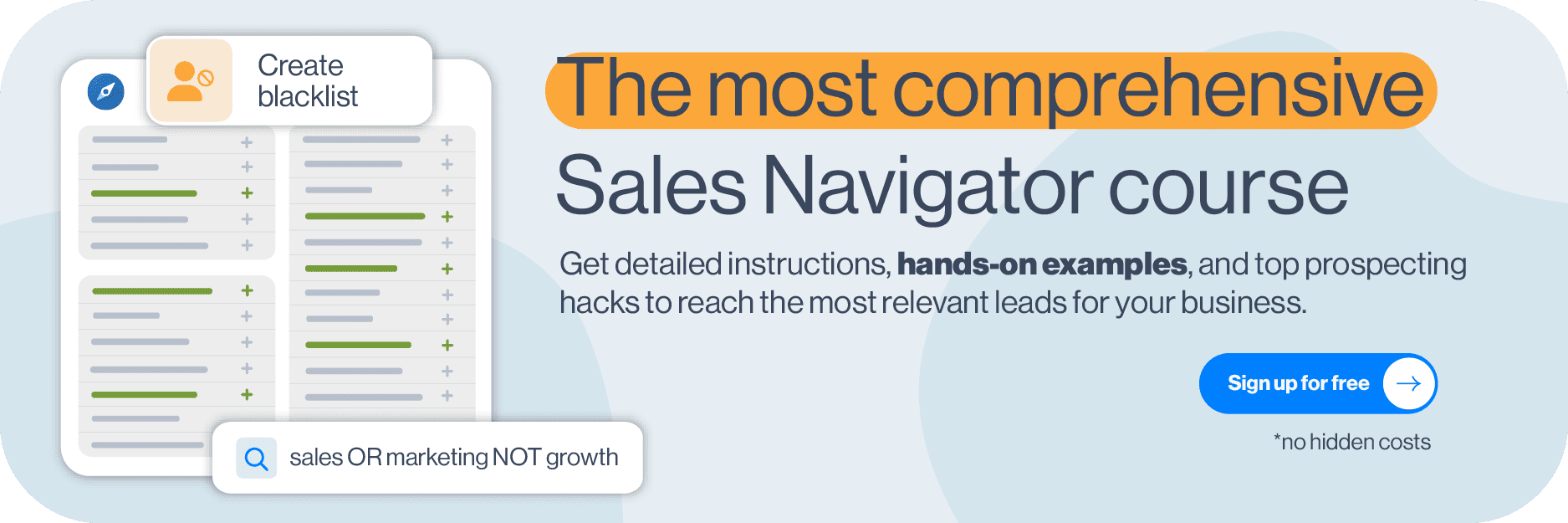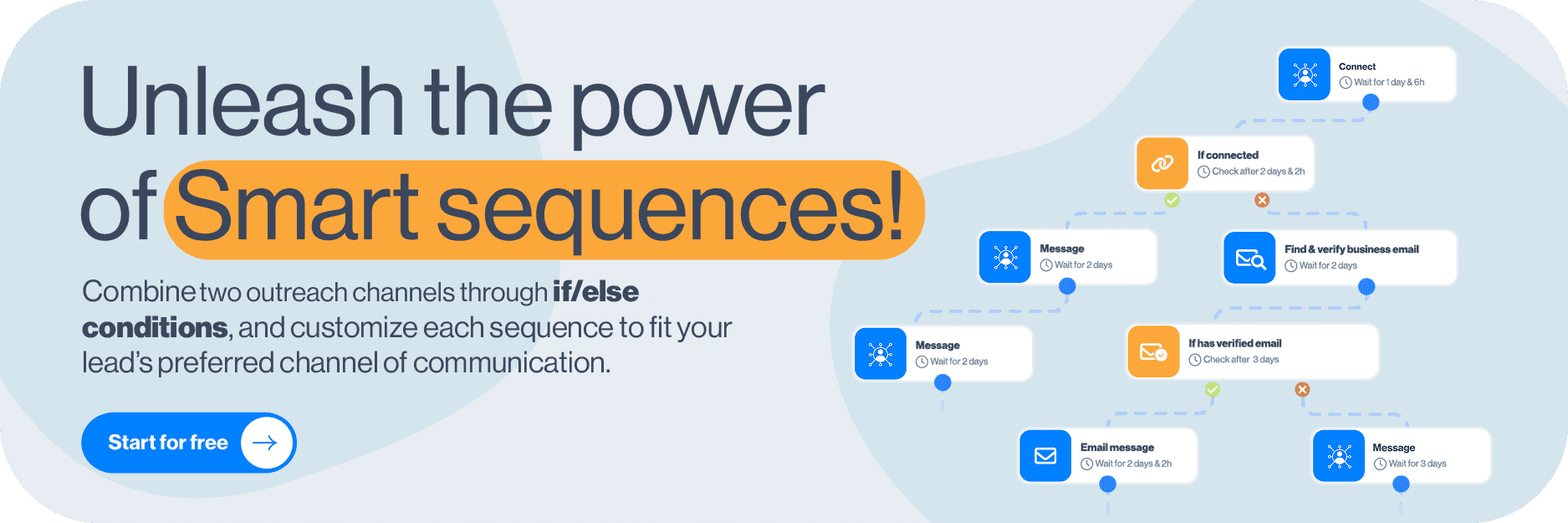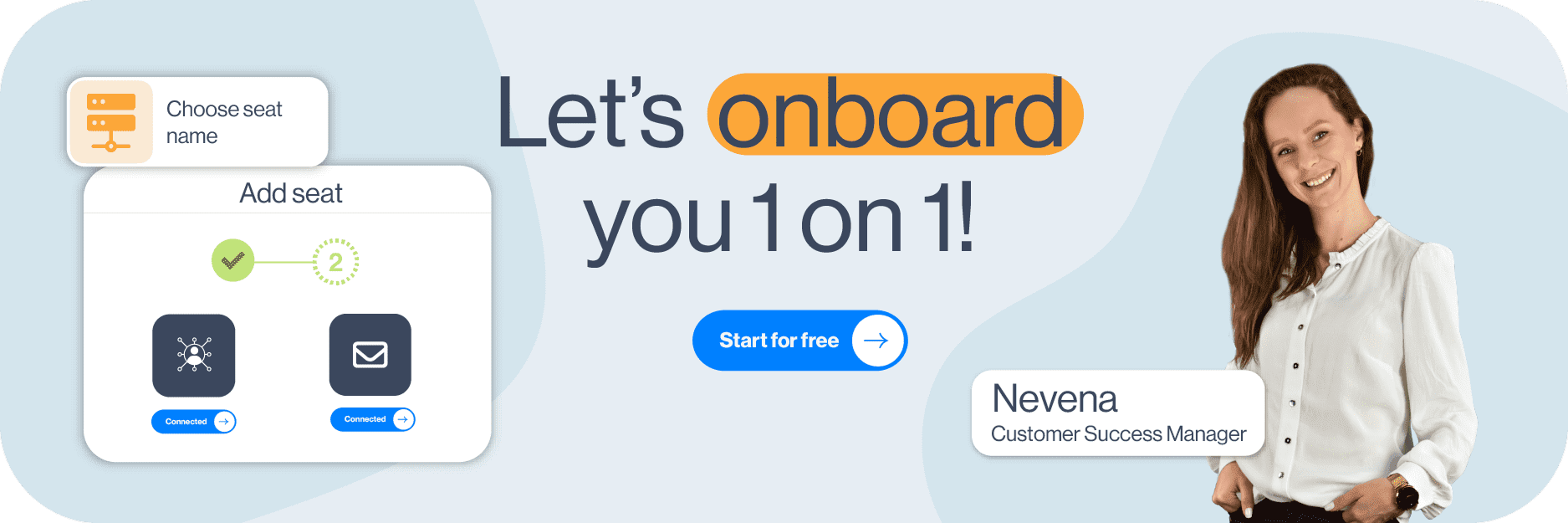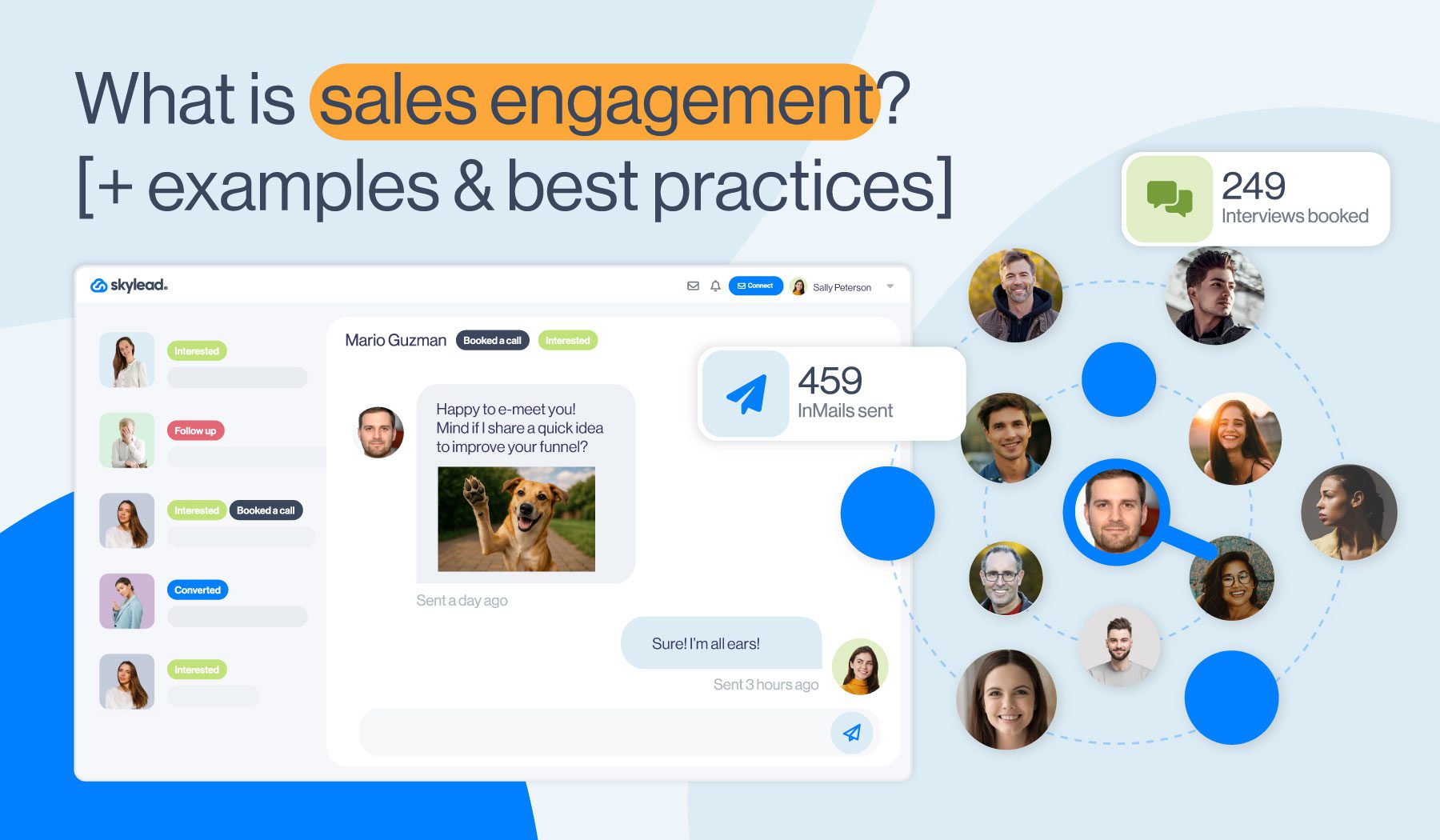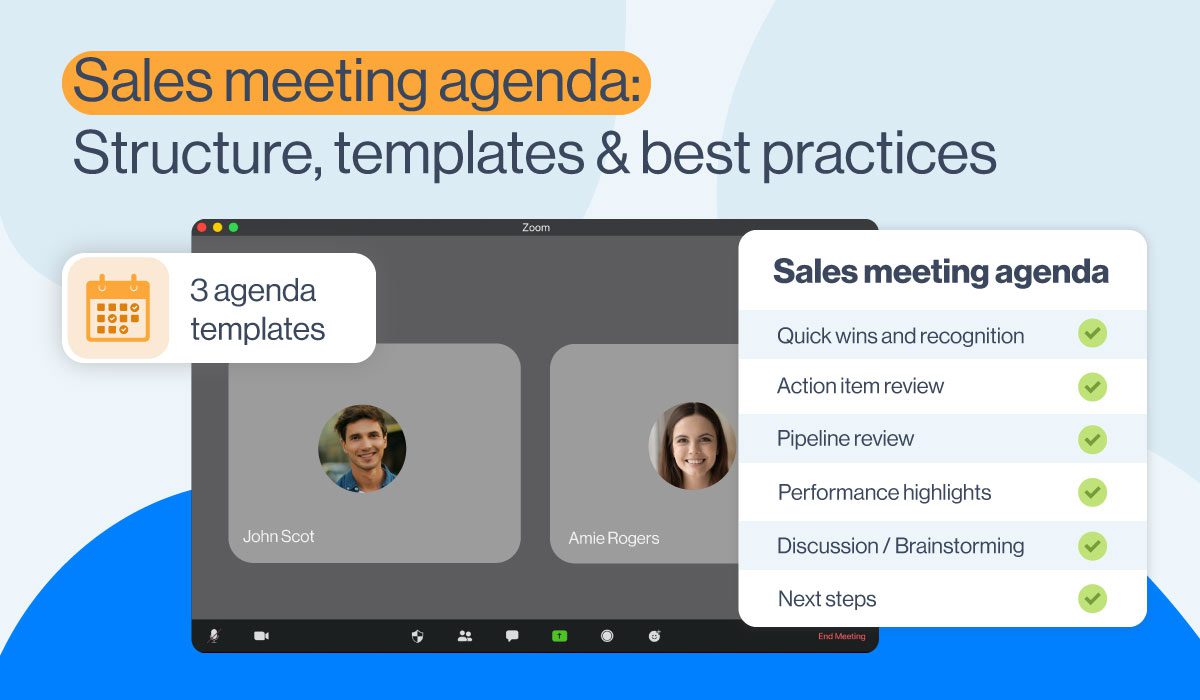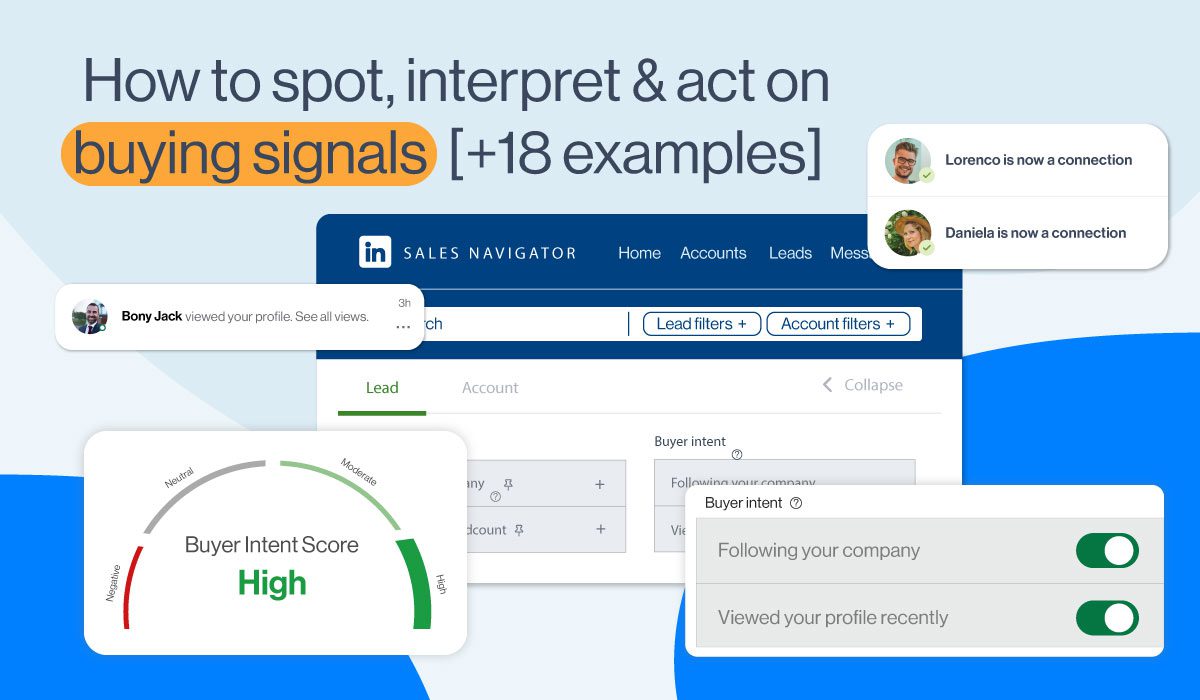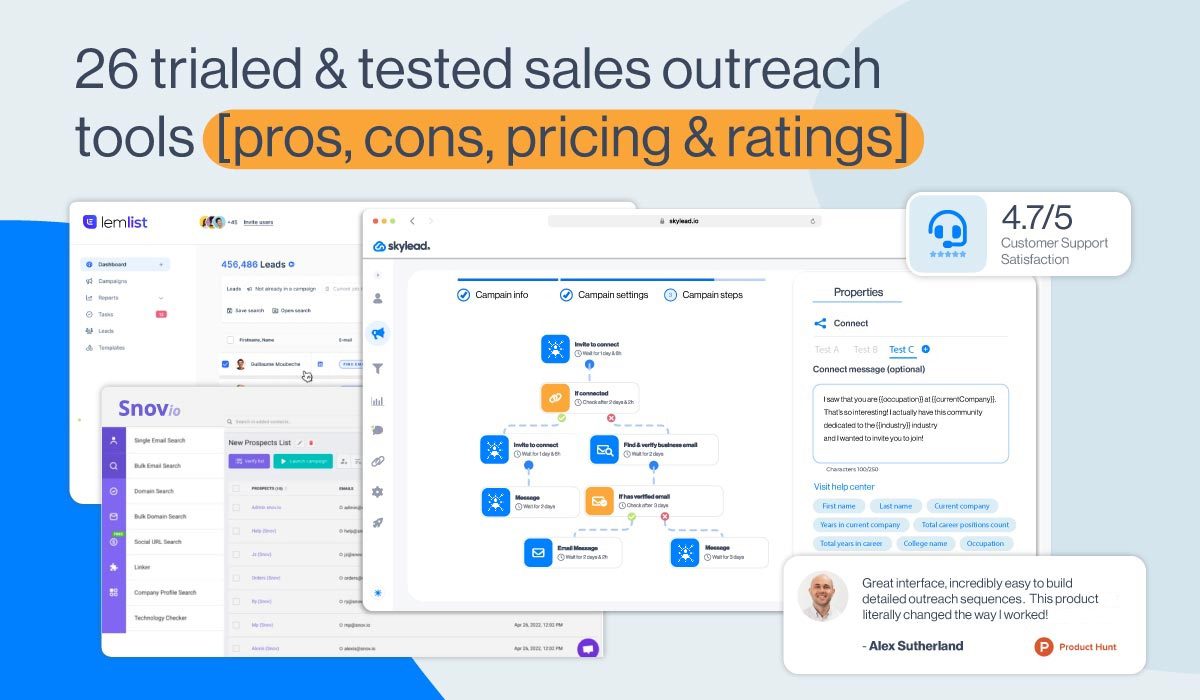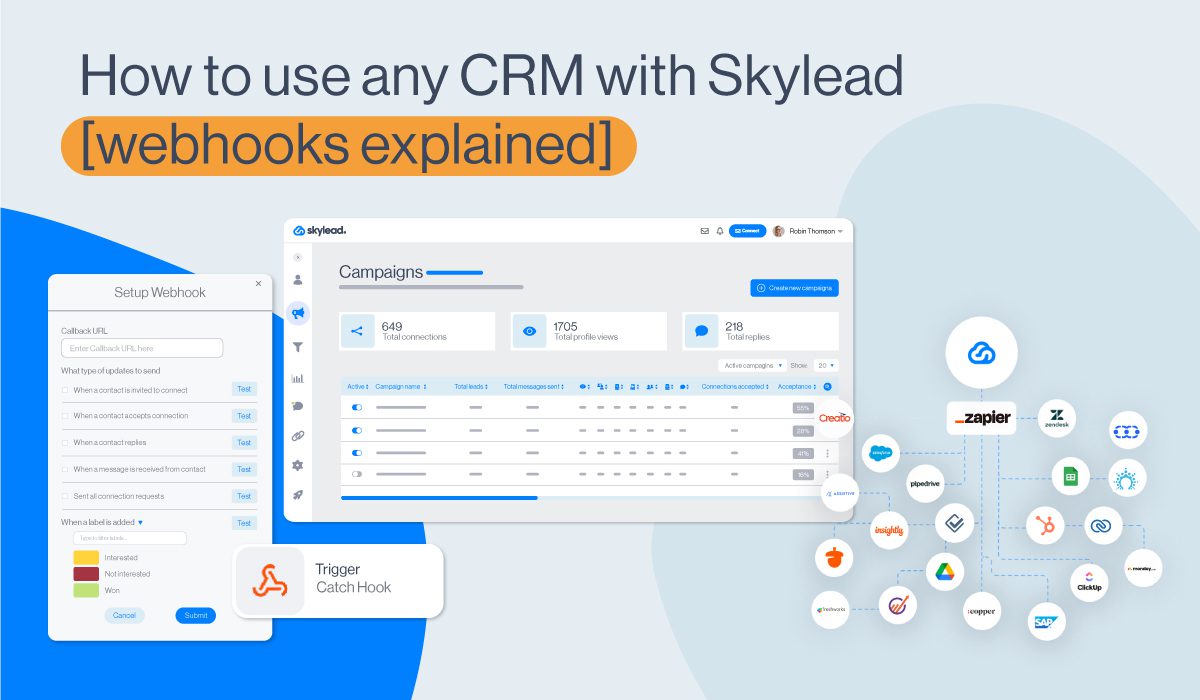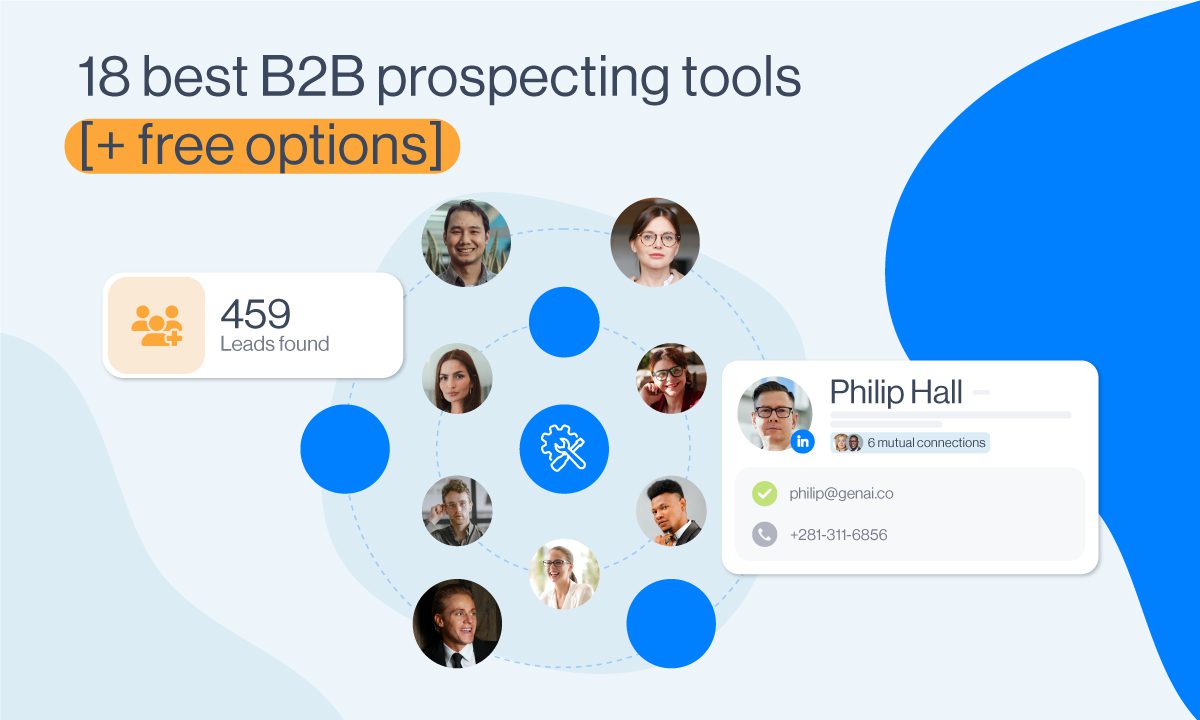24 high-converting sales tactics you need in 2026 [+12 to leave behind]

Disclaimer: Skylead is not affiliated, endorsed by or connected with LinkedIn in any way.
Today's B2B buyers are a whole different breed. In fact, rather than going straight to the sales rep to learn more about the product or service they are interested in as they did before, 97% of them are more likely to dive into independent research first. But why the sudden change in behavior? It’s because AI-powered tools and digital content were never as accessible as they are now. And while the rise of technology has simplified the buyer’s journey, it’s also caused certain sales tactics to become less effective. Heck, some have even completely died off or were ineffective to begin with.
That said, we sat down with our Head of sales, Andrea, a veteran with 11+ years of experience, to discuss what the future of sales holds. While at it, she reassured us there’s more work to be done than ever before. Provided the right sales tactics are used, that is.
So, we picked her brain on the topic to bring you:
- 24 sales tactics that work in 2026,
- 12 approaches that are best left behind.
We’ll dive into them all in a second. But first, let’s explain what sales tactics really are and what constitutes ethical vs. unethical selling.
What are sales tactics?
Sales tactics are specific techniques that salespeople use to engage prospects, overcome objections, and ultimately close deals. They translate a company’s broader sales strategy into tangible, repeatable actions that drive results. In essence, while a sales strategy outlines your overall plan to reach targets, sales tactics are the day-to-day actions that make that plan work.
Ethical vs. unethical sales tactics
Sales tactics generally fall into 2 main categories:
- Ethical sales tactics
- Unethical sales tactics
Ethical tactics imply putting your prospect first by listening, being transparent, and genuinely solving their problems. This means focusing on what’s in it for them instead of simply chasing a quick win. When you sell ethically, you build trust, forge lasting relationships, and let your product’s true value shine without the need for gimmicks.
Unethical tactics, a.k.a. high-pressure, aggressive, or manipulative tactics, lean on deception and manipulation. They might help you close a deal today, but they often leave a sour taste. They rely on exaggeration, bluffs, and sometimes even bad-mouthing competitors to force a decision. In the long run, such tactics erode customer trust and damage your reputation.
24 best B2B sales tactics you need to use in 2026
Now that you know the difference between ethical and unethical selling, it’s time to talk about the best sales tactics of the year 2026.
So, without further ado, here are 24 of our top picks that are all about selling the right, a.k.a. ethical way!
1. Gap selling
When we asked our Head of Sales, Andrea, to talk about her favorite sales tactic, she mentioned ''Gap selling'' with no hesitation whatsoever.
Gap selling is a problem-centric B2B sales approach focused on identifying the gap between a prospect’s current state and their desired future state.
It was coined by a coach who goes by the name Keenan, who noted that this technique enables prospects to ‘’see its positive impact on their lives” by directly addressing their specific pain points. That’s because, instead of pushing products or services, gap selling prompts you to uncover the buyer’s challenges and goals and then position your product/service as the bridge that fills that gap.
In practice, applying gap selling can involve mapping out the prospects’ challenges and goals side-by-side, then highlighting the exact “gap” your solution will close. For example, this can be reducing a manual process from 5 hours to 5 minutes or increasing ROI by a certain percentage.
As you make this gap and its resolution crystal clear, you create urgency and excitement, which makes the prospect want to close that gap with your help. And because you’ve demonstrated a thorough grasp of their situation, you’ve built credibility and trust, making it an ethical yet high-converting sales engagement tactic.
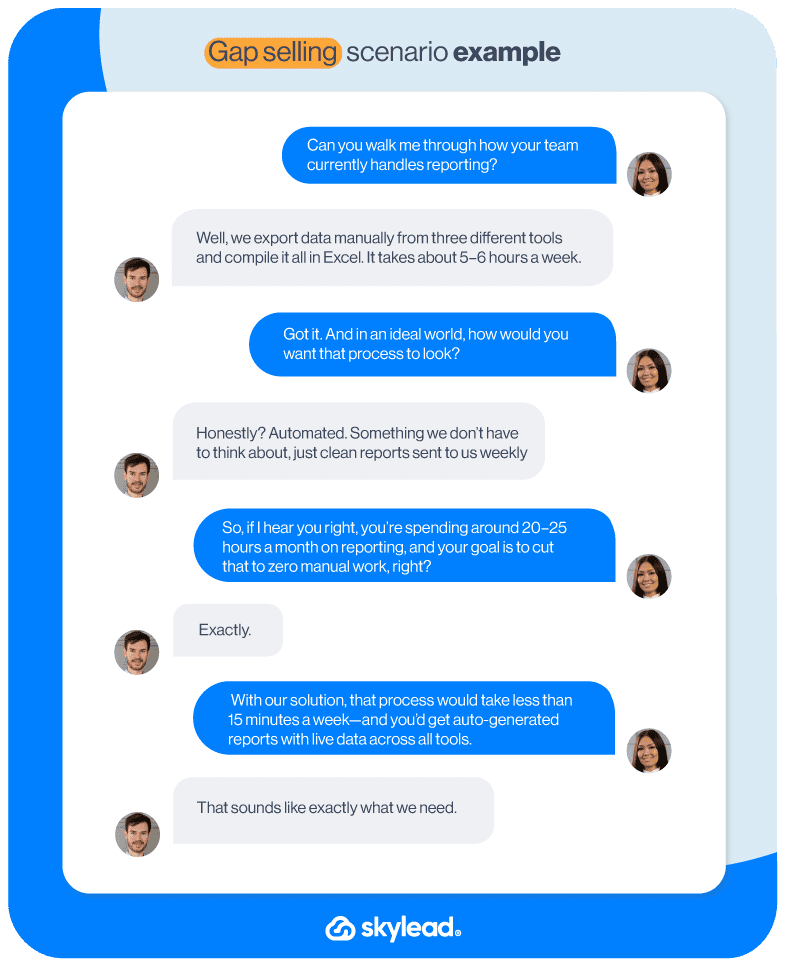
2. Flip the Script
This is a modern sales tactic popularized by Oren Klaff’s book ‘’Flip the Script,’’ which centers on reversing the typical sales dynamic. The idea is to get the buyer to feel that adopting your solution was their idea rather than feeling pressured by a salesperson.
Practically, this means moving away from forceful persuasion and instead leading the conversation in a way that the prospect convinces themselves of the value you offer.
The point is to establish yourself as an equal and a trusted advisor to them by aligning with their perspective and demonstrating insight into their business instead of pitching.
To paint a better picture, let’s say you were in a sales meeting.
Instead of delivering a hard pitch, you share a case study of a common industry challenge and how it was solved. You ask smart questions about how the prospect sees that challenge in their world.
As they engage, you acknowledge their expertise and perspective (status alignment) and add your own opinions sparingly to fill knowledge gaps. The prospect then begins to draw the conclusion that your solution addresses their needs.
By the end, they might say something like, “It sounds like if we did X (your solution), we could achieve Y outcome, right?” – essentially voicing what you wanted to convey. At that point, they feel in control and confident about the decision, which is incredibly effective for conversion.
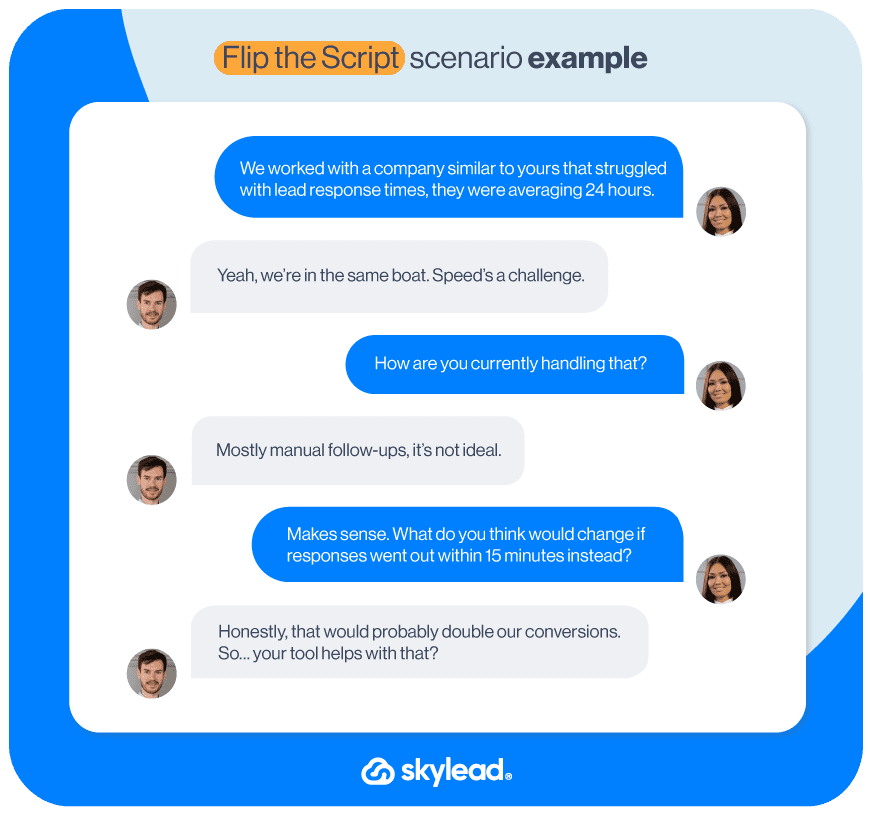
3. Challenge with insights (‘’Challenger sale’’ tactic)
Another high-impact tactic is the so-called Challenger sale approach—in essence, challenging your prospects with fresh insights that reframe their thinking.
The Challenger methodology uses a 3-step playbook often summarized as Teach – Tailor – Take control.
But what does this look like in practice?
Firstly, you teach by sharing thought-provoking insights and educating the buyer about potential risks or possibilities in their industry. For example, “Did you know 52% of companies in your sector are doing X, which is leaving them vulnerable to Y?”.
Then, you tailor this information to the prospect’s specific business, connecting the dots to their situation or pain points.
Finally, you take control of the conversation by confidently guiding the next steps, thereby helping the prospect navigate decisions.
This tactic is very effective when used properly. And by properly we mean when you challenge constructively and back it up with facts or case studies, so it’s helpful, not arrogant.
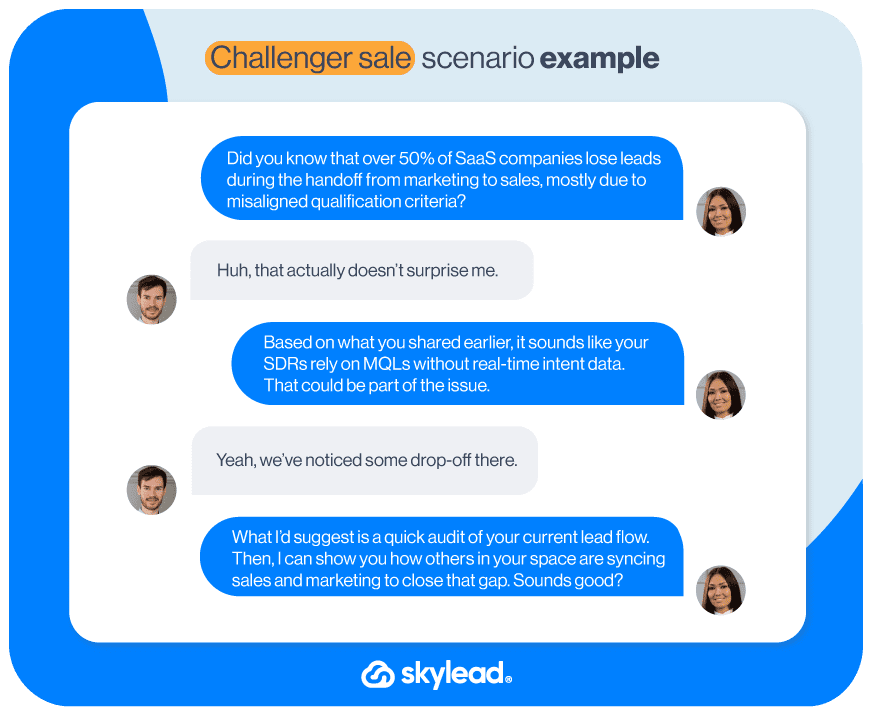
4. Leverage social selling on LinkedIn
Social selling means using social media platforms to connect, engage, and build relationships with prospects before pitching.
In terms of LinkedIn, social selling typically involves sharing helpful content, commenting on your prospects’ posts, and sending them non-salesy messages that provide value. Over time, these interactions warm them up so by the time you do reach out to talk business, you’re already on their radar.
On top of engaging in this type of LinkedIn lead generation, you can also use this platform for research. Use it to learn more about your prospect’s role in their company, their interests, mutual connections, etc, so you can personalize your cold outreach.
Of course, don’t neglect your LinkedIn profile. Optimize it accordingly by changing your default LinkedIn URL, filling in your LinkedIn headline and LinkedIn summary, and upload a professional profile photo and LinkedIn cover photo. Also, don’t forget to keep your posts sharp and brimming with value!
This is important because when prospects check you out (and they will), a strong personal brand can make them more receptive to your message. Consequently, this may translate into more sales.
5. Use buyer intent signals to prioritize leads
Not all leads are created equal—some are WAY more ready to buy than others. So, how do you determine who’s closer to a sale? By studying so-called buying signals, a.k.a. clues that indicate a prospect’s level of interest or urgency.
These signals can include behaviors such as:
- Visiting your pricing page,
- Downloading a whitepaper,
- Opening several of your emails,
- Engaging with your LinkedIn content.
So, what you want to do is strike while the iron is hot. In other words, reach out to these individuals as they are exploring your solutions to maximize the chance of conversion.
Luckily, there are plenty of sales intelligence tools that can help you identify these high-intent individuals, such as ZoomInfo, Leadfeeder, 6Sense, and our personal favorite — Sales Navigator.
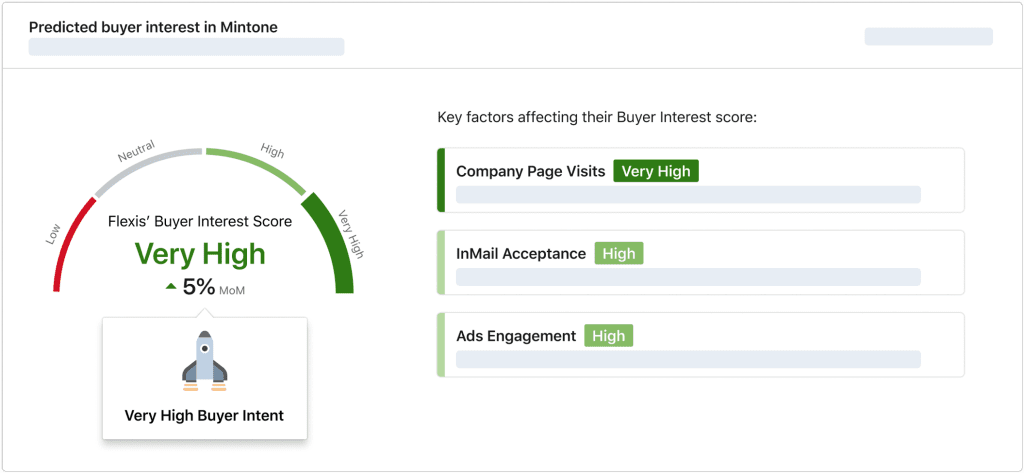
6. Zero in on your ideal prospects through LinkedIn Sales Navigator
Speaking of Sales Navigator, it can be used for a lot more than simply identifying buyer intent. As a matter of fact, it’s THE tool for LinkedIn prospecting, meaning it’s where you can find prospects with laser precision.
Now, why are we talking about prospecting when the focus is mostly on sales tactics that help you CLOSE leads? Because no matter how polished your pitch is, if you’re talking to someone who isn’t the right fit, it won’t lead to a deal.
So, how do you get to those individuals? Through LinkedIn Sales Navigator filters. Though advanced LinkedIn filters are useful, Sales Navigator has a lot more to offer in this regard.
Specifically, it offers:
- 29 Lead filters
- 15 Account filters
…and 27 of these can be found only on the platform!
You can use this filter to narrow down your search and then save it so you can revisit it later. You can also save individual companies or prospects that perfectly match your ideal customer profile and buyer persona into a Lead list.
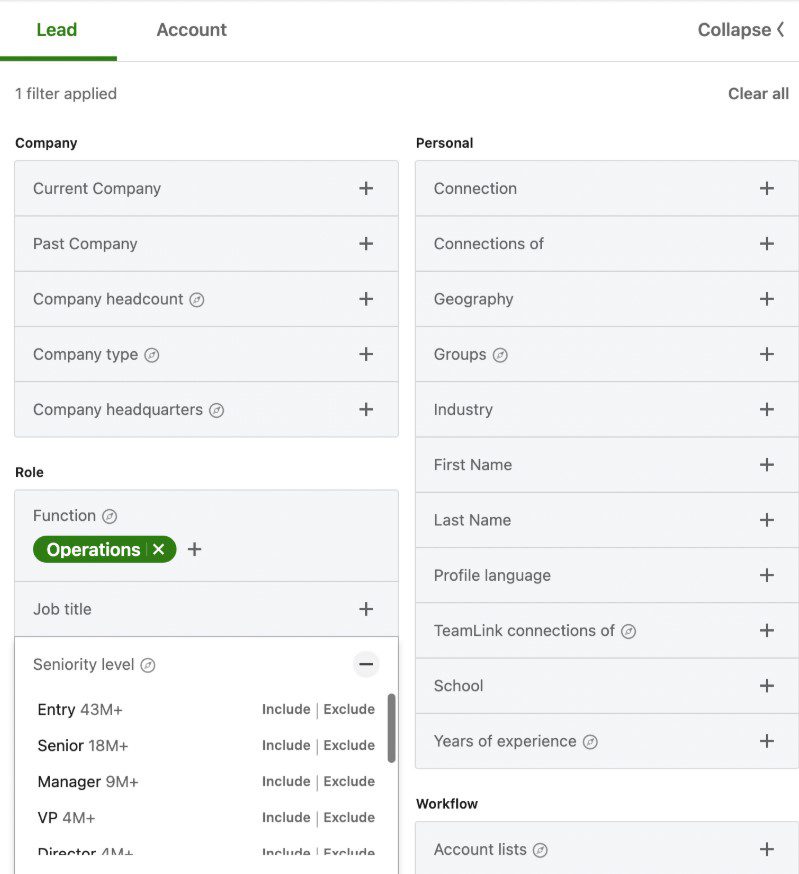
What's more, you can even set up Sales Navigator alerts to notify you of when your target prospects change jobs or share content so you know exactly when to reach out.
7. Engage multiple stakeholders (a.k.a. multi-thread your deals)
In B2B sales, rarely does a single person call all the shots. There’s usually a buying committee or group – and that group has grown larger in recent years, often including managers, executives, end-users, and procurement all weighing in. As a matter of fact, research indicates that the average buying group now involves about 10 to 11 stakeholders.
That’s why one of the best sales tactics of 2026 is to multi-thread. In other words, contact multiple stakeholders in the target account instead of relying on a single person.
As an example, let’s assume you’re selling some type of software. In that case, you might need buy-in from:
- The IT director (who cares about security and integration),
- The end-user team lead (who cares about usability),
- And a VP or C-level executive (who cares about ROI and strategic impact).
Multi-threading would mean reaching out to each of these personas in parallel, which, in turn, increases your chances of finding at least one internal person who will advocate for you.
Not to mention, when you build relationships across the organization, you create multiple support points for your proposal. If your main contact leaves or goes silent, the deal doesn’t die because you’ve got others on board. Plus, when decision time comes, you’ve already addressed concerns from every angle, making it easier for the group to say yes.
8. Take advantage of multiple channels
So, we’ve already established LinkedIn and its Sales Navigator as the primary places to chat with prospects. But one of the best sales tactics is to rely on multiple channels for your outreach.
Multichannel outreach implies using more than one channel to reach out to prospects. Chances are, if they’re inactive on one, they won’t be on other(s), so there’s a higher possibility of getting a response.
You can use our tool, Skylead, to reach out to prospects found through Sales Navigator, LinkedIn, and Recruiter.
Our feature, Smart sequences are algorithms that combine outreach actions with if/else conditions. As a result, you get coherent outreach flows that help you unfold outreach according to the way your prospects behave. In turn, they maximize your touchpoints with them.
You can also connect as many email accounts to Skylead as you wish. The tool will automatically rotate between them while sending emails to help you send tens of thousands of those a month.
Don’t have your prospects’ emails? No problem! You can still take advantage of unlimited email outreach! Namely, Skylead has a native email discovery and verification feature that you can add as a step to your sequence. As a result, the tool will discover and double-verify your prospects’ emails without breaking your outreach flow or using 3rd party tools. And did we mention all of this comes at no additional cost?
9. Warm up cold leads with research and personalization
Cold outreach doesn’t have to feel cold. The trick is to warm up your leads by doing a bit of homework and adding a personal touch to your communication.
So, before reaching out to a new prospect, spend a few minutes researching them and their company. Look for a recent achievement (e.g., a funding announcement or product launch), mutual connections, or even a hobby or interest you can find. As we mentioned, LinkedIn can be useful for this. Then use that tidbit in your LinkedIn message, email, inMail, even a cold call.
For example, you might start an email with:
“Hi Jane, I saw on LinkedIn that you just spoke at the SaaS Summit – congrats! I loved hearing you talk about user retention…”
…and then, move on to how your product might help with a relevant challenge. This way, you show the prospect that you’re not just batch-and-blasting thousands of people with the same spiel. It earns you a few extra seconds of their attention, which is often all you need to stand out.
Keep in mind that when using Skylead, it’s possible to scale personalized outreach. Namely, our tool has built-in variables that you can add to your messages.
Or, if you’re setting up a campaign using a CSV file, you can even define custom variables with any detail(s) you uncovered during your research.
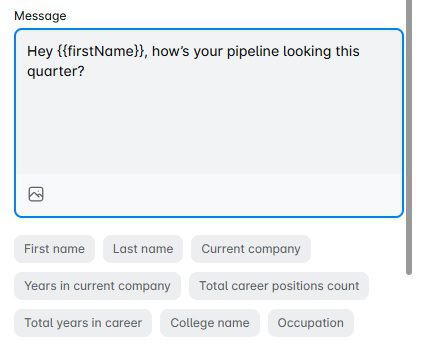
Want to boost your response rate? We’ve got you covered with a native Image and GIF personalization feature. Use it to personalize any image or GIF with you and/or your prospects’ LinkedIn profile image, company logo, or text of your choice, complete with variables.
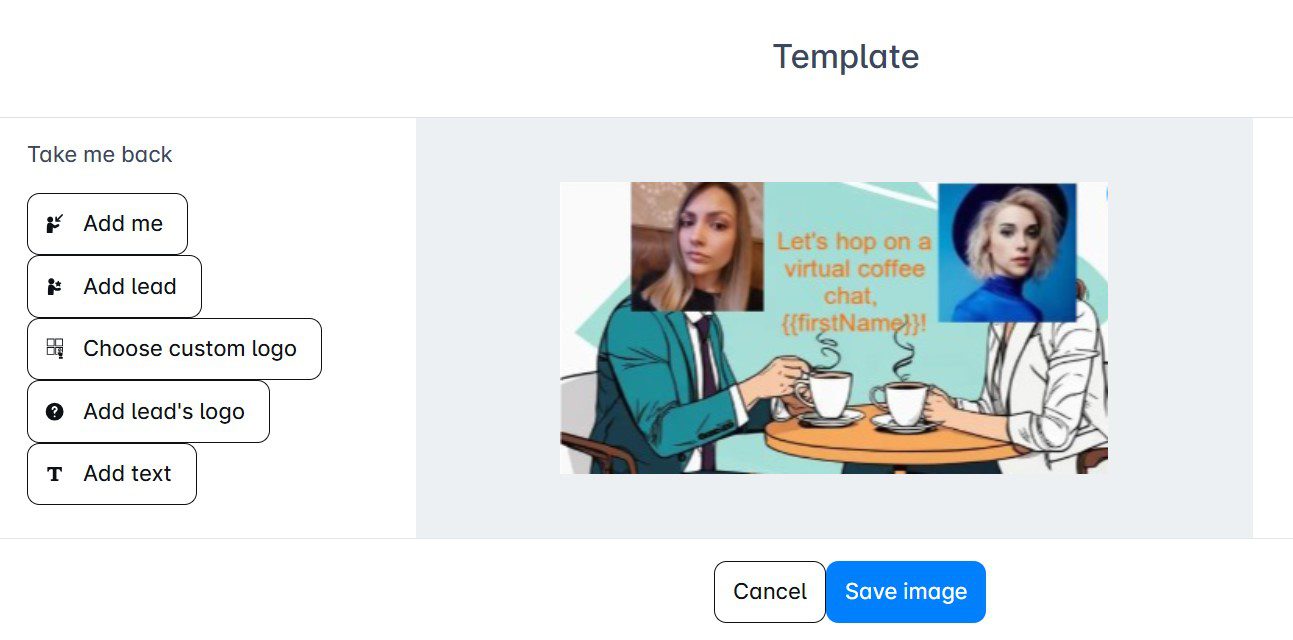
A picture is worth a thousand words, so trust us when we say your leads will love it! Who knows? You may even get to beat our 76% response rate that resulted from using this feature!
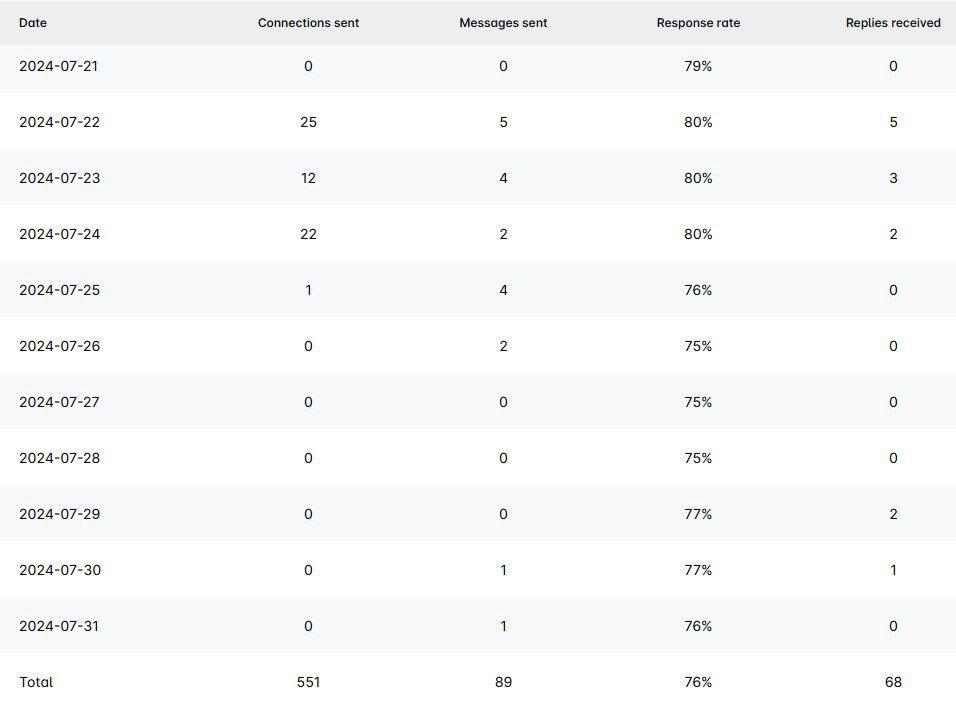
10. Embrace video selling
You might find yourself in a situation where a message or a static image may not fully convey your enthusiasm or explain a complex solution.
That’s when you want to turn to video selling. This involves using video at various stages of your sales process – from sending quick introduction videos during initial outreach to conducting live product demos or personalized walkthroughs on Zoom to even shooting a short, customized “thank you” video after a meeting.
But why video? Because it helps replace the face-to-face connection that traditional field salespeople would establish in person. It’s simple. Humans trust what they can see, and by putting your face and voice in front of a prospect, you build familiarity and rapport much faster than text alone. Not to mention, it’s novel and shows you put in the effort.
Want to take advantage of video selling all while using Skylead? Well, you can, as our tool integrates with the #1 video selling platform, Sendspark, to bring you AI-powered dynamic video functionality. This means you can create your videos and personalize them at scale using Sendspark, and then include them in your messages, LinkedIn inMails, or emails in Skylead as you would personalized images and GIFs.
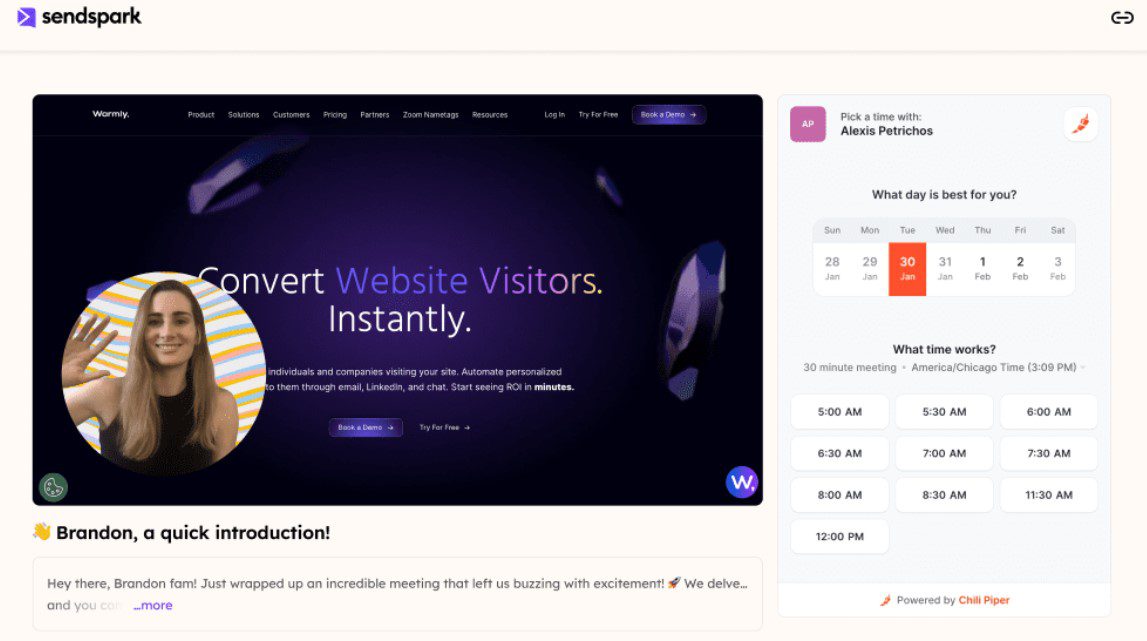
11. Sell value, not features (Value-based selling)
Too many salespeople fall into the trap of pitching product features or using buzzwords, which prospects tune out.
Value-based selling changes this narrative by focusing on the prospect’s needs and how your solution improves their situation (saves money, increases revenue, reduces risk, saves time, etc.).
In practice, this means your conversations, proposals, and demos should continually answer the buyer’s unspoken question: “What’s in it for me/my company?”
For example, rather than saying:
“Our software has an AI-driven analytics dashboard,”
You might say:
“With our software’s AI analytics, you’ll identify sales pipeline bottlenecks in seconds, potentially recovering 10% of deals that would otherwise slip through – directly boosting your quarterly revenue.”
See the difference? The latter speaks the language of value and outcomes.
Implementing this tactic requires discovery because you must understand what the prospect values. Just keep in mind that different business decision-makers value different things. A CFO might prioritize ROI or cost savings, whereas an operations manager could care most about efficiency and ease of use. So, you’ll need to adjust your value points accordingly and use metrics or case studies to quantify them.
Value-based selling also means sometimes challenging the buyer if they focus too much on price. This is when you steer the conversation to total value instead. It’s also closely aligned with gap selling because you highlight the gap between where they are and where they could be and emphasize the value of closing that gap.
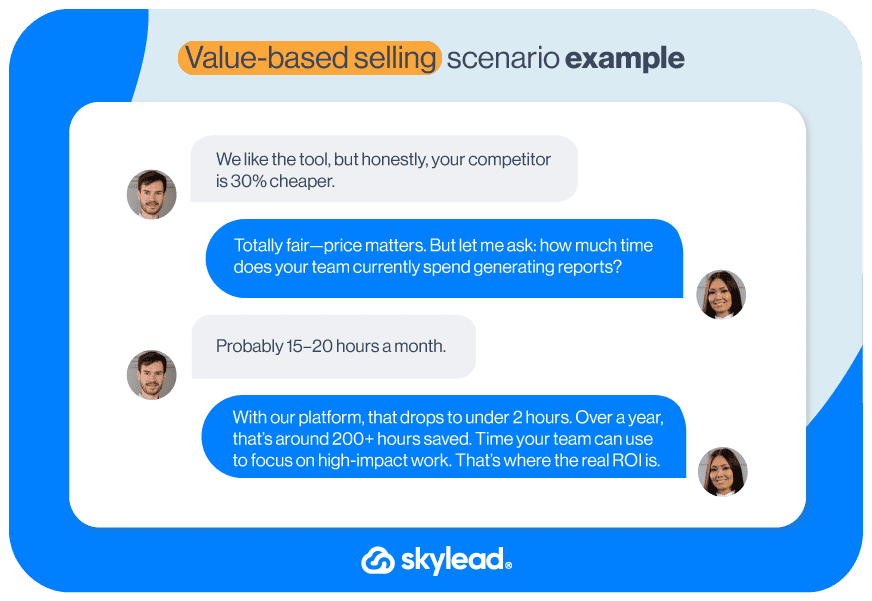
12. Turn discovery calls into consultations (Consultative selling)
The discovery call is often the first substantive conversation with a prospect – and how you handle it can set the tone for the entire sales cycle. A top-performing tactic is to approach discovery calls as free consulting sessions instead of a qualifying checklist or a sales interrogation.
In a consultative discovery, your primary goal is to understand the prospect’s world: their challenges, objectives, and constraints. You ask open-ended questions and really listen to the answers.
But equally important, you provide valuable insights and advice right on that call, even if it means sharing some expertise without an immediate return. Treat the prospect as if they’ve hired you for an hour to improve their business – that mindset shift unlocks a ton of good.
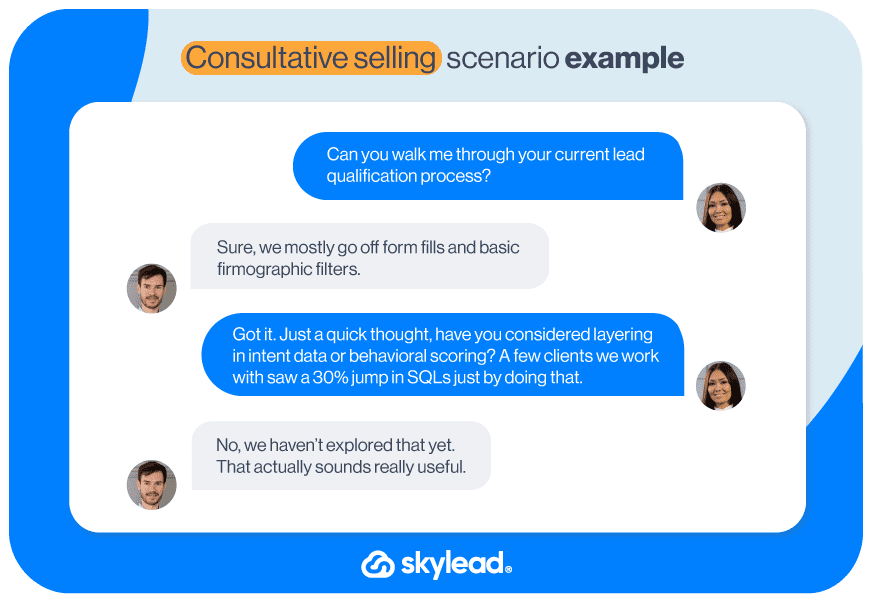
13. Practice active listening
Andrea insists that truly hearing your prospect is as vital as presenting the perfect solution.
And no, we're not talking about just nodding along or waiting for your turn to speak. Instead, you need to be all in. Absorb every word they share, then hit them with clarifying questions to confirm you’ve caught the whole meaning behind their words.
14. Study non-verbal cues
Sometimes, listening isn't enough; you also need to study your prospects' behavior to determine if they are receptive to your pitch. Although, this sales tactic only works if you're on a video call.
If yes, then pay close attention to subtle changes. You'd be surprised by how much a raised eyebrow, a quick glance, or even a change in posture can reveal.
15. Address “elephants in the room” head-on
When something’s clearly off but no one’s mentioning it, just bring it up. In other words, if you sense a lingering concern, be it about budget, competition, or any other obvious roadblock, address it directly. Confronting these issues shows you’re confident and upfront, and it builds trust by clearing the air.
16. Ask for referrals and introductions
One of the quickest ways to generate high-converting leads is to tap into the networks of your satisfied customers and contacts.
The concept is straightforward: if you have happy customers (or even just happy conversations with prospects who maybe weren’t a fit), ask them if they could refer your company to anyone else who could benefit from your solution.
You can even create referral incentives or programs. Just be careful as, in B2B, professional courtesy and reciprocity are often incentive enough.
The high conversion aspect comes from the fact that referred prospects come in with a positive bias. They’ve heard a success story about you from someone they trust, so half the battle (credibility) is won. Then, it’s up to you to deliver a similarly great experience.
💡 Pro tip: Build a habit of asking for 1 referral at certain milestones (post-implementation, after a big win, upon renewal, etc.).
17. Co-create sales content with the marketing team
Sales and marketing go hand in hand…one just can't exist without the other. As a sales rep, you probably rely on content like e-books, white papers, and case studies to showcase your expertise and build credibility with prospects.
Imagine if you had to create all that on your own! You'd be bogged down and have little time left to actually close deals. Instead, the smartest move is to feed your insider knowledge to marketing. They’ll take that information and craft compelling content that lets you focus on what you do best—selling.
Speaking of which, we (marketing) teamed up with the sales team to build a Sales playbook that helped scale Skylead in as little as 9 months. Check it out below to pick up a few tricks up your sleeves!
18. Share customer success stories
Storytelling is the art of sales. And the most convincing stories you can tell are those of your existing customers’ success. Thus, it’s not surprising that incorporating customer success stories, case studies, and testimonials into your sales process can dramatically increase conversion.
This might happen in a variety of ways: you can mention a relatable client example during sales conversations. Alternatively, you can share written or video case studies (the ones your marketing team created) that detail the problem-solution-result journey of a customer.
You might also bring up testimonials or quotes from happy users when addressing a prospect’s concern. The idea is to prove with evidence that you’ve delivered the results your prospect is looking for to customers just like them.
Here’s a quick snapshot from our customer success story with Dennis Goyal to paint a better picture of what we’d share:
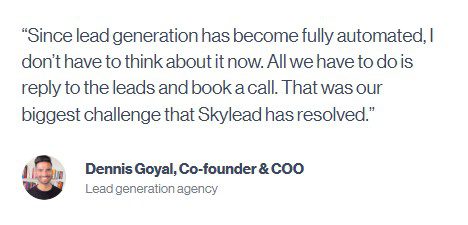
19. Streamline and simplify the buying process
An often overlooked sales tactic is making it incredibly easy for the buyer to say yes and move forward. Even if you have the best pitch, a prospect’s enthusiasm can fizzle out if the purchasing process becomes painful or complicated.
As a salesperson, you should advocate for a seamless customer journey, reducing friction at every touchpoint. Tactics to do this include providing clear and concise proposals that are easy to understand and not filled with jargon or unnecessary info.
You can also offer to guide the prospect through internal hurdles. For example, suggest you set up a meeting with their finance team if needed to explain pricing and ROI or provide security documentation upfront to satisfy IT reviewers.
Then, if scheduling a demo or trial, use a simple booking link or be very accommodating to their calendar to avoid delays. You can also introduce self-serve resources for those who prefer it. Some prospects might not be ready for a live call early on, so have recorded demos or interactive product tours available as well. This way, the buyer can explore at their own pace without pressure, which can then lead to a more productive live conversation when they’re ready (and often filters out folks who aren’t serious).
Being responsive is part of this, too, so answer messages promptly and follow up when you say you will to keep the process moving.
20. Take advantage of automation
Modern sales reps rely on automation tools a lot more than they care to admit. With reason! After all, they help you automate repetitive tasks (e.g., prospecting, initial outreach, scheduling meetings, etc.) so you can focus more on selling and less on admin work.
There are hundreds of automation tools available, ranging from B2B prospecting tools to sales outreach tools and CRMs even.
Of course, the tactic here isn’t to replace the human touch but to support it. Automation can open doors, but it’s your personal engagement that will close the deal.
21. Follow up with customers
You know your job doesn't end once the deal closes, right? To really show you care, you need to keep following up!
You can try the 3-3-3 rule here: reach out 3 days after the purchase, then 3 weeks later, and finally, 3 months in.
The first check-in, just 3 days after the deal, is your chance to make sure everything’s running smoothly during the onboarding phase. Then, at 3 weeks, you can see if any questions or issues have popped up and let them know that you’re there for them beyond the initial sale.
Finally, the 3-month mark is your chance to make sure they’re still satisfied, but it’s also the perfect opportunity to ask for a referral, which is a sales tactic we previously discussed.
22. Tap into cross-selling and up-selling opportunities
After you've built a solid relationship with your customers, it's time to consider if they could benefit from additional products or upgrades.
In other words, it’s time to cross-sell or up-sell them.
Cross-selling involves suggesting complementary items that enhance their current solution, whereas up-selling means recommending a higher-tier option that offers extra value.
If a customer mentions a need or challenge that isn't fully addressed by their current setup, that’s your cue to propose a relevant option.
Keep in mind that your goal is not to push more products on them but to genuinely help them achieve better results. So, present the option as a natural extension of what they already use, and make sure the recommendation aligns with their aspirations and pain points.
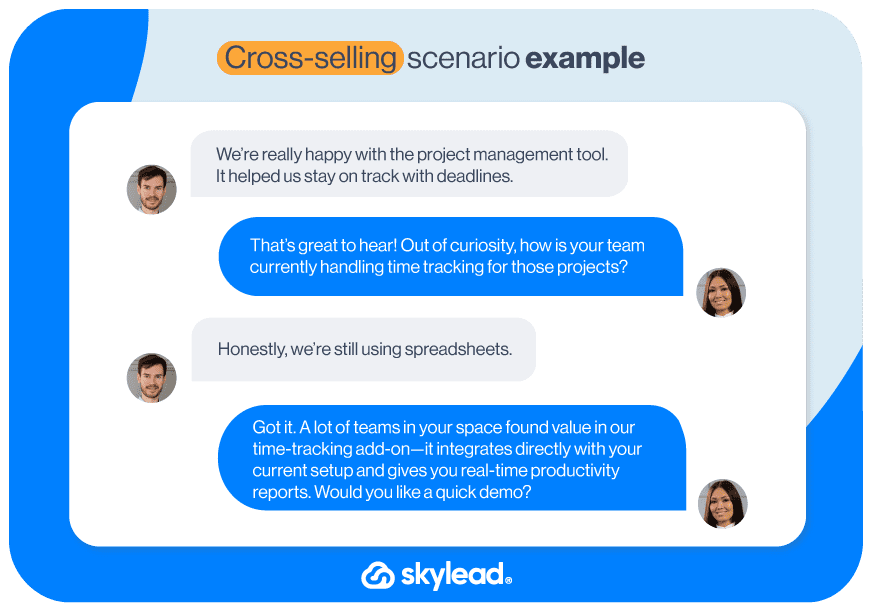
23. Collaborate across teams for a seamless buying journey
Complex deals can involve technical questions or unique challenges that a lone salesperson might not solve. Top-performing sales reps aren’t afraid to pull in colleagues from other departments to help close the deal. After all, teamwork makes the dream work!
As you know, this blog is a direct collaboration between our marketing and sales team. However, there’s a lot more that marketing and sales can collaborate on.
Remember the buyer intent signals we talked about earlier? Well, say that a marketing team notices that a specific prospect has downloaded multiple eBooks. In that case, they can flag this as a high-priority lead for sales.
Of course, collaboration isn’t limited to these 2 teams. Sales can also collaborate with developers, where they ask them to hop on a demo call to better explain a technical feature. Or, they can collaborate with the customer success team during the onboarding phase. Scenarios are infinite!
24. Audit and analyze sales calls to improve performance
Recording your sales call is not a direct sales tactic. It is, however, something that will help you determine if the other sales tactics you're using are working. Before you've started recording, though, it's important to ask for permission from your prospects.
Once you have the green light, go through with it. Then, use these recordings to analyze your calls. Look for the moments where you nailed your pitch and, just as importantly, where you stumbled. Use these insights to fine-tune your strategy, improve your responses, and boost your overall performance.
12 sales tactics to avoid using
Some of these are high-pressure, aggressive, and purely manipulative, while others are simply outdated. Regardless, they all share one thing: they should be left behind in 2026.
1. Overselling
When you push your product too hard, exaggerate its benefits, or promise more than you can deliver, you risk losing credibility and scaring off prospects.
So, instead of turning your pitch into a desperate sales push, focus on authentic value. Let your track record and genuine benefits speak for themselves—as they should!
2. Fake enthusiasm
Trying to force excitement that doesn't feel real is a red flag—prospects can definitely see through it.
Rather than going overboard with enthusiasm, it’s better to be genuine. Being authentic doesn’t mean you can’t show passion, but it should actually reflect how you feel about what you're offering.
After all, real interest and trust are what resonate the most, not a manufactured act, so you better drop it.
3. Rushing leads through the sales cycle
Speed may seem like an asset, but when you rush your leads, you risk undermining the entire relationship. Moving too quickly can come off as pushy, and you might miss the subtleties of what your prospect really needs.
So, take a moment to genuinely engage, ask questions, and let the dialogue unfold at its natural pace. When you respect your prospect’s timeline, you're more likely to build loyalty and seal the deal on solid ground.
4. Beating around the bush
When you're not rushing your prospect, you might end up dancing around the important points. But being vague and avoiding the heart of the matter leaves your prospect confused and frustrated.
The trick is to strike a balance—be clear and direct about the value you offer while still allowing the conversation to breathe.
5. Selling to just about anyone
If you're trying to sell to everyone, you're missing the point, which is to focus on those individuals that truly need your solution.
So, target your ICP and buyer persona, and your pitch will become sharper and more relevant, leading to deeper connections and a significant increase in conversion rate.
6. Pitching products, not solutions
One of the biggest rules of sales is to not do to others what you don't want others to do to you. So, put yourself in the prospects' shoes. How would you feel if a rep was talking about product features on and on? Not great, we bet!
Prospects aren't looking for a spec sheet; they're looking for answers to their problems. Rather than listing features, translate technical details into tangible benefits that directly impact their bottom line.
7. Playing on FOMO (the ‘’Takeaway’’ tactic)
Many reps swear by this tactic, and if we're being completely honest, it does work. But is it ethical? Not so much.
The Takeaway sales tactic plays on the fear of missing out (FOMO). You hint that what you're offering might vanish if the prospect doesn't act right away. Think along the lines of, “This deal is only available for a limited time” or “We might have to pull this offer soon.” The idea is to create a sense of urgency, which compels the prospect to make a quick decision.
Now, while this pressure can sometimes seal the deal, it often leaves prospects feeling cornered. What’s more, the moment a prospect senses that urgency is artificially created, their genuine interest takes a hit.
8. Ignoring objections
Some sales reps might think that if they simply let objections fade into the background, the issue will just disappear. But ignoring objections is a dangerous game that gives room for doubt to grow and for your competition to swoop in.
Instead of hoping the objection will vanish on its own, ask probing questions to understand exactly what’s behind the objection, then address it directly.
Andrea says that every objection is an opportunity to show you’re listening and that you genuinely care about solving your prospect’s challenges. Neglecting these concerns not only undermines your credibility but can also cause the prospect to feel dismissed, which is something no one wants to experience during a sales negotiation.
9. Using the ‘’higher authority’’ as a bargaining chip
Some reps love to say, “Let me check with my superiors,” even when they already know the answer. This move is essentially a bluff—pretending that you need approval, even though the outcome is already a done deal.
The idea is to soften the blow by implying that there's room to maneuver so you can later come back with a counteroffer that looks more appealing.
This might work to ease the conversation momentarily, but it isn’t exactly ethical. Not to mention, it can make you seem like you’re hiding behind someone else’s decision, which may come off as lacking confidence or authority.
10. Overrelying on discounts
Discounts may provide a quick sales boost, but the long-term effects can be damaging.
In fact, over-discounting can erode your brand’s perceived value and train customers to wait for price cuts instead of purchasing at full price. More often than not, they also signal that your product/service just isn’t worth its regular price.
So, instead of overusing discounts, the smart play is to focus on adding value to your offerings in the form of exclusive features, better service, or loyalty rewards that don’t undercut your brand’s image.
11. Bad-mouthing the competition
We know how tempting it is to highlight a competitor’s shortcomings, but bad-mouthing them is a definite no-no.
Talking bad about your competitors shows you’re insecure about your offerings or that you’re biased even. What’s more, it’s possible your prospects used their products/services in the past and had a positive experience with them, which means your negative comments are more likely to alienate them.
Thus, a much better approach is to let the strengths and unique benefits of your product/service shine through on their own merits.
Frequently asked questions (FAQs)
1. What are tactics in sales?
Sales tactics are the specific, actionable techniques that you use day-to-day to engage prospects, overcome objections, and ultimately close deals. Think of them as the practical steps you take to implement your overall sales strategy.
2. What is the difference between sales strategy and sales tactics?
A sales strategy is your big-picture plan—it outlines your target market, overall approach, and long-term goals. Sales tactics are the hands-on methods you employ every day to execute that strategy and drive results. Simply put, strategy sets the destination, while tactics chart the course.
3. What is the 3-3-3 rule in sales?
The 3-3-3 rule is a follow-up guideline that helps maintain customer relationships after a sale. It means reaching out 3 days after the purchase to ensure smooth onboarding, then 3 weeks later to address any questions or issues, and finally 3 months in to check satisfaction and ask for referrals.
4. What are aggressive sales tactics? (a.k.a. high-pressure sales tactics)
Aggressive or high-pressure sales tactics involve pushing prospects to make a decision quickly by using relentless follow-ups, urgent language, and sometimes even a confrontational approach. These tactics often leave prospects feeling cornered or overwhelmed, which can damage trust and hurt long-term relationships.
5. How to avoid high-pressure sales tactics?
To avoid high-pressure tactics, focus on building genuine, consultative relationships. Listen actively, provide clear and honest information, and let your prospects make decisions at their own pace. By emphasizing transparency and customer-centric solutions, you build trust without forcing a quick sale.
Unleash your full sales potential with the right sales tactics!
You've just discovered 24 sales tactics that can transform your approach and drive conversions in 2026.
Now, it's time to put these into action—test, iterate, and fine-tune your process until you’re closing deals like never before.
But if we’re being completely honest, the above sales tactics perform best when combined with high-quality tools, such as Skylead. So, don’t wait a second longer! Sign up for your 7-day free trial with Skylead and see how you can pair it up with these proven tactics to make them work in your favor just about every time!



